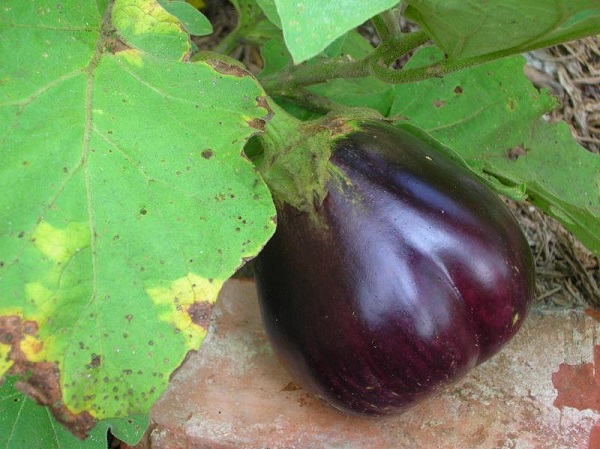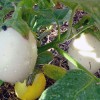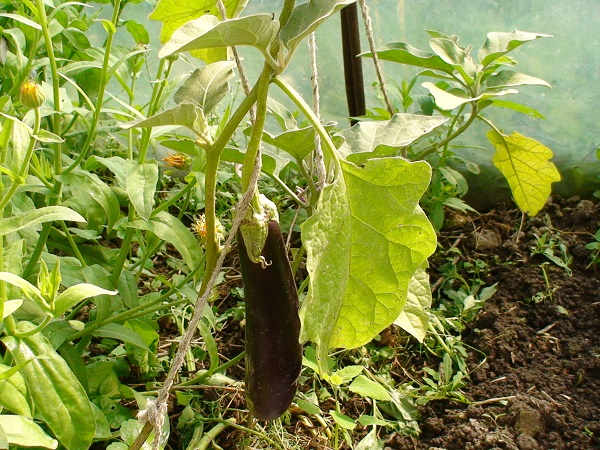What to do if eggplant leaves turn yellow in a greenhouse
Content
Why do the leaves turn yellow
There are many reasons for yellowing of eggplant leaves. Their condition is negatively affected by excessive watering, especially with cold water, or, conversely, a lack of moisture in the soil. The plant reacts sharply to the lack of nitrogen fertilizers and potassium, which provide normal vegetative processes. The harmful effects of fungal microflora (powdery mildew, downy mildew, copperhead, anthracnose) and harmful insects such as aphids, spider mites, whiteflies cannot be ruled out.
Do not discount the quality of the seeds - collected from diseased plants or purchased from unverified producers, they seriously affect the quality and nature of eggplant growth. If the seedlings are improperly grown, whether it is insufficient fertilization or an excess of water, the leaves of adult plants may turn yellow.
Sunlight, which is vital for eggplants, can both save the plant and destroy it. With a lack of lighting at all stages of growth, the leaves of the eggplant turn yellow. Both cloudy weather and excessive greenery of bushes that do not stepchild can lead to this. In any case, it is important to avoid such a situation. Excessive lighting also harms the plant - the leaves get burned, unable to cope with the large amount of light. Sometimes the leaves turn yellow due to watering, the water droplets remaining on the plate become lenses that enhance the sun's rays. Although the first option is more common in a greenhouse, always be on the lookout for the second.
Often the problem lies in the eggplant variety. It may not suit your area or the composition of the soil in which you grow it. However, more often the problem lies in the wrong crop rotation, when eggplants in a greenhouse are grown for two years in a row in the same place or are planted in beds after peppers or tomatoes.
If the leaves of the seedlings turn yellow immediately after transplanting, then this is a temporary problem - after a short period of adaptation, the plant will acquire a healthy, strong appearance.
Why do fruits turn yellow?
Why can eggplant fruits turn yellow when grown in a greenhouse? Often this is a symptom of a viral disease - internal necrosis. It begins with brown spots on the fruits, which, within a few days, seem to fade, becoming yellow. Sometimes these are the consequences of advanced late blight, which affects a vegetable at any stage of development. Late blight actively develops with excessive air humidity and sudden changes in air temperature.
Finally, one of the reasons for the yellowing of the fruit may be a banal lack of mineral fertilizers. Simply put, eggplant does not have the resource to normally feed the fruits with all the necessary substances, they gradually turn yellow and wither.
Video "Why do eggplant leaves wither?"
This video reveals the causes of some plant diseases.
How to troubleshoot problems
If you are faced with yellowing of the leaves or fruits of eggplant while growing in a greenhouse, you must act without delay. It is important to do everything to find out which plant care points are being followed and which are not.
In any case, it is recommended to do external root feeding with nitrogen and potassium. It can be supplemented with a yeast or milk solution to increase the nutrient content of the soil.
If you are over-watering or using cold water, stop watering for a few days to dry out the soil. In order not to get stony soil after drying - loosen the soil every day, so you not only organize the flow of fresh air to the roots, but also make it easier for yourself the task with subsequent feeding.
Be sure to remove all weeds from your greenhouse beds. One of the reasons why the leaves turn yellow is the lack of nutrients that the weeds absorb. Carry out pinching, it is necessary for eggplants along with watering and sunlight. Grasshopping, in addition to removing unnecessary shoots, helps to solve the problem with a lack of light. It also has a positive effect on the fruiting of eggplant, preserving more nutrient resources for the fruit.
If the leaves turn yellow due to the fungal microflora activated in the greenhouse, then it is important not to postpone the treatment of plants with fungicides. Depending on the type of disease, a certain pesticide is selected or (if the fruiting period has begun), folk remedies are used. For example, spraying with milk whey, infusion of onion peel or garlic, soap solution. Be sure to apply outside root dressing to support the plant during a difficult period.
The active activity of harmful insects that damage the leaves require complex cultivation of the land and plants in the greenhouse. Why is it important to take a comprehensive approach to the issue? Because most insects, being driven from vegetables, move to the upper layers of the soil, or they hide in the base of the greenhouse.
Prophylaxis
Why the prevention of diseases that affect the leaves and stems of plants is important is understandable. Certainly does not raise the question "Why?" following the rules "do not water with cold water", "regularly pinch", "loosen the ground", "remove weeds", "give enough sunlight". These are natural things that fit into the concept “It is easier to prevent than to cure”.
As a preventive measure, try to ventilate the greenhouse as often as possible. Musty air negatively affects the appearance of plant leaves, in addition to everything else, condensation is removed from the walls of the greenhouse, which has a positive effect on the growth of eggplant, but negatively on the growth of fungal microflora.
Maintain a stable air temperature, do not allow sudden changes in it, as this causes significant harm to eggplants. Watch out for watering, do not be afraid to add organic elements, water with infusions and broths. Thus, you will always maintain a growth-friendly amount of nutrients in the soil.
Be sure to remove weeds, as well as the tops of dead plants to avoid the invasion of harmful insects or fungus. Plus, it saves more micronutrients for the growing eggplant.
Video "Why do the leaves of seedlings wither?"
The causes of sluggish leaves in seedlings are described in this video.








